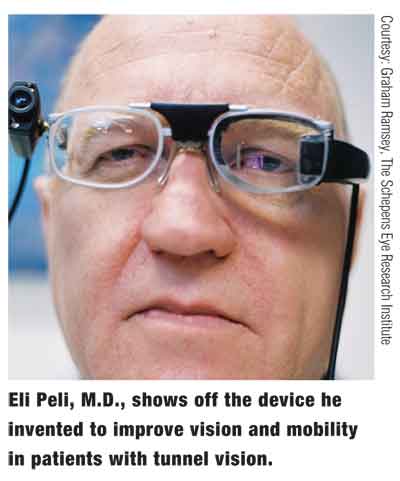A newly developed vision device for patients with tunnel vision may improve their ability to visualize their surroundings, according to a study in Septembers Investigative Ophthalmology & Visual Sciences.

The diminutive computer-video system provides updated outline information 30 times per second so that when a patient becomes aware of a potential obstacle or interesting object in the superimposed outline image, she can move her head and eyes to look directly at the object through the display.
The device is the brainchild of Eli Peli, M.D., senior scientist at Schepens Eye Research Institute and professor of ophthalmology at Harvard Medical School. To evaluate its effectiveness in helping people with tunnel vision when searching for objects, he conducted a study on 12 tunnel vision patients who had an hour of training on the device. These patients were then asked to search for targets outside their residual visual fields on a blank background under three cue conditions: contour cues provided by the device, auditory cues and no cues. The researchers found that patients showed significant improvements in directness of search path when the contour or auditory cues were provided. They also found a significant reduction in search time (average 22%) in patients with a visual field wider than 10.
The performances of patients could be improved furtherwith additional trainingeven for those with smaller visual fields. The search directness was improved for all subjects, which means they were not searching aimlessly, as they did without the device, says Gang Luo, Ph.D., lead author of the study. However, the speed of head and eye movements was reduced when patients used the yet unfamiliar device. We believe that a few days of training would improve their speed and thus increase their search abilities dramatically.
The researchers next move: to test the usefulness of the device when used by tunnel vision patients in their homes and during outdoor activities.
Luo G, Peli E. Use of an augmented-vision device for visual search by patients with tunnel vision. Invest Ophthalmol Vis Sci 2006 Sep;47(9):4152-9.

